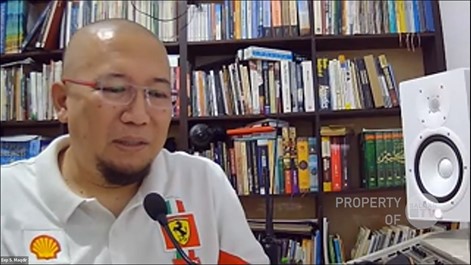Explaining Sound System Settings for a Comfortable Worship Experience
By Adi Permana
Editor Adi Permana

BANDUNG, itb.ac.id—Comfort in worshiping according to each and everyone’s personal beliefs and living in tolerance among different religions are rights that cannot be removed from the community. However, there has lately been a lot of buzz regarding the usage of mosque loudspeakers for various religious activities, especially azan.
Lecturer from the Building Physics Research Group Ir. R. Sugeng Joko Sarwono, M.T., Ph.D., explained that regulations about mosque loudspeaker settings have already existed since 1978. These regulations, when published back to the public, gained much feedback from various parties.
“Basically, we don’t control the azan, but instead we control the energy of the sound from the mosque’s electronic devices,” Ir. Joko stated in the webinar “A Comfortable Da’wah with Proper Mosque Speakers” on Friday, February 22, 2022, which was held by LPPM ITB in collaboration with the Salman Mosque ITB.
He recounted that historically, azan used to happen by using a manual funnel that grew large at the other end and above a certain height to reach the congregation’s ears as to fulfill the call for salah. As the development of technology progresses, the usage of electronic loudspeakers are much more effective as we hear today.
The sound source has three components: the energy of loudness (in the form of decibels), pitch (frequency), and time. The loudness of the sound source is the most questioned component among those three, as it is sometimes not in accordance with the safe hearing limit. The government's regulation calls for a solution to this problem with a magnitude of 100 dB measured at a distance of 1 meter (the maximum human hearing limit is 140 dB).
The measurement of this loudness cannot solely rely on the human ear as each person has different hearing abilities. Inexperienced people could just use a suitable software on their phones instead as it would be able to measure easily and for free too. The quantity of loudspeakers used should be adjusted accordingly in relation to the shape of the mosque’s room. In the case where loudspeakers are needed indoors, they should be directed downwards in order to be heard clearly by the people.

During this opportunity, sound system consultant Eep S. Maqdir stated that apart from energy, the time of usage should also be considered. The comparison between sound propagation at night and day has a significant difference. At night, when it is quiet, the loudness should be reduced and vice versa during the day.
The mosque’s audio technician should also have qualified knowledge about loudspeakers. The features commonly used at loudspeakers are still limited to bass and treble, while Eep suggested adding an equalizer feature to reduce the emitted noise. Additional devices such as compressors were also recommended as it could suppress the sound to be more comfortable to listen to when it is too loud.
Reporter: Lukman Ali (Mechanical Engineering, 2020)
Translator: Hanna Daniela Ayu (Faculty of Mechanical and Aerospace Engineering, 2021)

.jpg)
.jpg)

.jpg)
.jpg)

